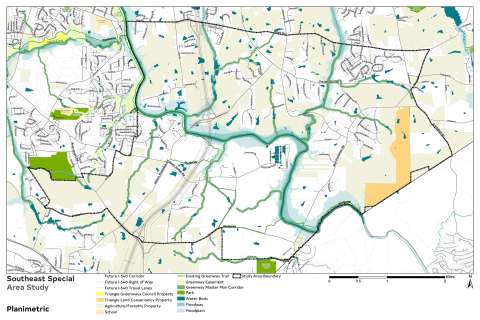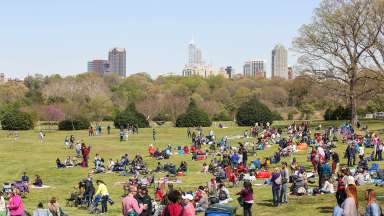The City Council adopted the recommendations of the Southeast Special Area Study at the April 4, 2023 meeting. The Final Report and Comprehensive Plan Amendment (CP-12-21) are the result of public engagement between 2019 and 2021.
What’s next?
The City Council authorized expansion of the extraterritorial jurisdiction (ETJ) into the Southeast Special Study Area (SESSA). View a brief video below about ETJ Expansion in the Southeast Special Study Area.
The Southeast Special Area Study is a planning project focused on the future land use, conservation and natural resources, transportation, and public utility infrastructure of approximately 18 square miles in southeast Wake County. The study area is roughly bounded by southeast Raleigh, Wake County’s boundary with Johnston County, Poole Road, Smithfield Road, and Old Baucom Road. One of the largest area studies ever undertaken by the City of Raleigh, the Study Area encompasses an area roughly the size of the Town of Chapel Hill, NC (see Growth and Extent Comparison).
The 'cover' image on this page is a photograph of the Oaky Grove Methodist Church, ca. 1910. This church is now part of the Sarah and Bailey Williamson Preserve, owned by the Triangle Land Conservancy, who provided the photo.
Project Details
- Type:
-
Area Plans
- Project Lead:
-
Hannah Reckhow, Senior Planner





